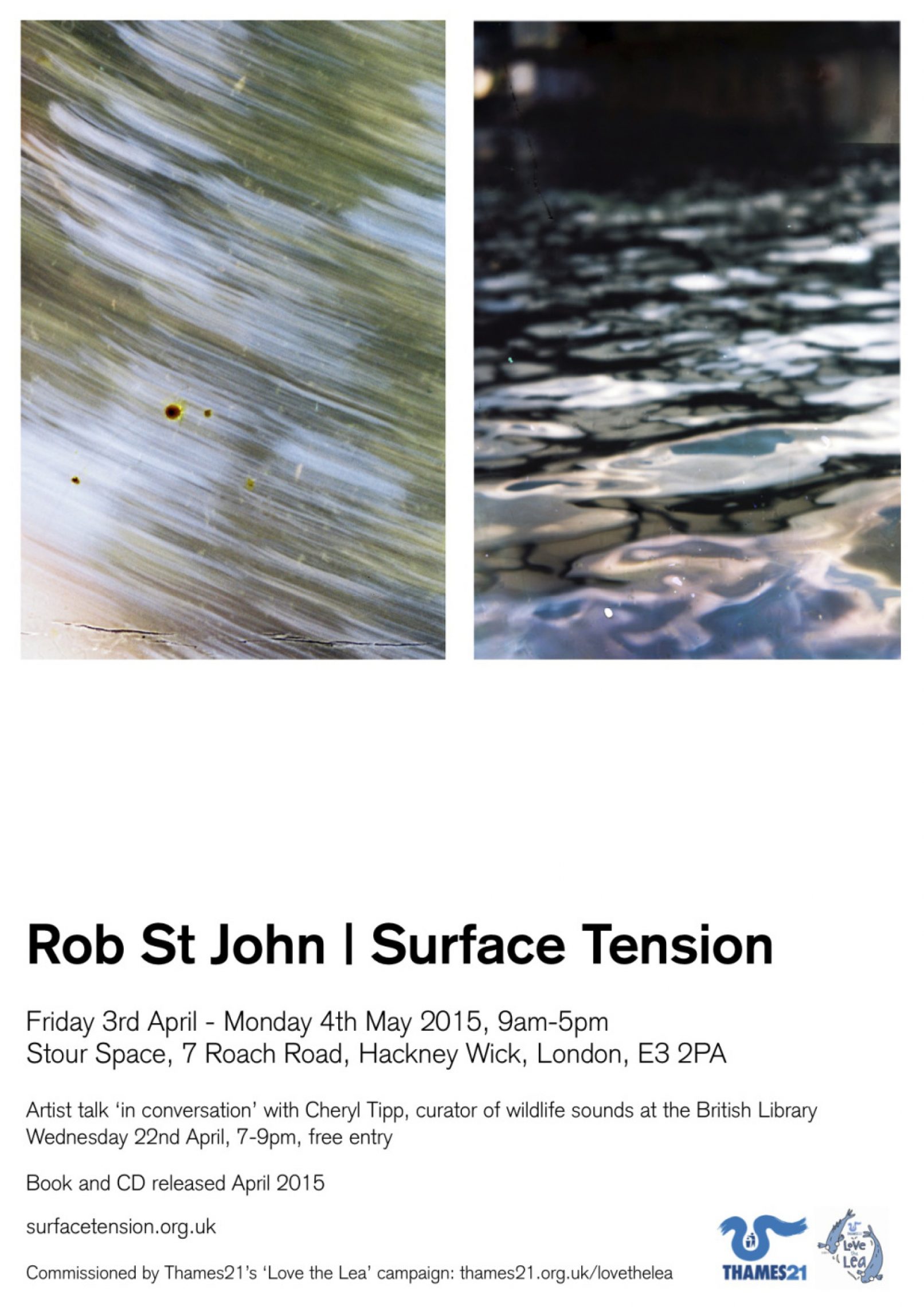surface tension
2014 - 2015
Surface Tension was a field recording, photography and writing project exploring pollution, life and biodiversity along the River Lea in East London.
Designed as an ‘experimental geography’ of the Lea Valley, the project used field recordings taken with binuaral, hydrophone and contact microphones (sound map here) and tape loops, convolution reverbs and sonifications of pollution datasets to create a new piece of music.
The album was released in a book containing 120 and 35mm film photographs taken with pinhole cameras made from Lesney matchboxes, and writing documenting the practices in the project.
The films and tape loops were soaked in Lea river water for a month and then rescanned: the pollutants and organic life in the water leaving new channels and knickpoints.
Read the book below:
Interviews + features
Interview with Cheryl Tipp, curator of wildlife and environmental sounds at the British Library:
Part 1, Part 2
Interview with Canal and Rivers Trust Waterfront magazine
Interview with East End Review
CD + Book Release
52 page book of 120, 35mm and pinhole photographs and writing with CD of Surface Tension album.
Perfect bound, printed on heavy, uncoated recycled paper. First edition (125 copies) | Second edition (100 copies). Both Sold Out.
Book design by Tommy Perman.
Pattern + Process Press PPP001
Exhibitions
A selection of photographs taken with 120 and 35mm box and pinhole cameras, mostly double exposed and the negatives treated in Lea river water for a month, was exhibited at Stour Space, Hackney Wick throughout April 2015, and The Lighthouse, Glasgow in July 2015.
Prints are available to purchase, please contact for prices and availability.
Thames21 Love the Lea
Surface Tension was commissioned in Summer 2014 by the Thames 21 charity for the ‘Fixing Broken Rivers‘ project as part of the Love the Lea Campaign, which raises awareness and takes practical action to improve water quality of the rivers of the Lea Catchment.



